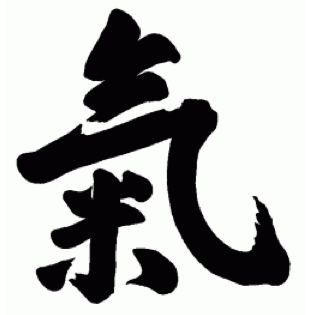Finding Calmness
Remaining calm under stress is part of our training in Kokikai Aikido. In self defense, calmness is essential in order to react quickly and effectively. Calming the mind can help widen your perspective, allowing you to see additional ways to handle the situation.
The ability to find calmness also has great benefits in daily life. Even if you don't think you are typically anxious or "stressed out," practicing some simple techniques to find calmness can help you make better decisions and act in more effective ways.
Of course, many people live with stress and anxiety that's caused by issues that are not in their control. Finding calmness may not help those issues themselves, but it can help change the way you approach them, and that can make a big difference.
How to Practice Finding Calmness
Some exercises, like focusing, are best practiced when you are already calm. But I suggest practicing calmness when you are not feeling particularly calm. I'm sure you can think of such a time! It's actually best to start with situations in which you feel only moderately upset. For example:
The ability to find calmness also has great benefits in daily life. Even if you don't think you are typically anxious or "stressed out," practicing some simple techniques to find calmness can help you make better decisions and act in more effective ways.
Of course, many people live with stress and anxiety that's caused by issues that are not in their control. Finding calmness may not help those issues themselves, but it can help change the way you approach them, and that can make a big difference.
How to Practice Finding Calmness
Some exercises, like focusing, are best practiced when you are already calm. But I suggest practicing calmness when you are not feeling particularly calm. I'm sure you can think of such a time! It's actually best to start with situations in which you feel only moderately upset. For example:
You're about to take a test.
You're late.
You're stuck in traffic.
You're stuck in traffic.
You wake up at 3am with all kinds of worries, and your mind won't quit.
You'll eventually find yourself quite naturally applying the practice to more difficult situations.
Step 1: Pause and Notice
Tara Brach, in her wonderful book, Radical Acceptance, talks about the value of pausing:
Step 2: Four Principles
My aikido students will not be surprised that I use the four principles of Kokikai Aikido as a guide to help bring calmness to both your body and your mind:
What if we were to intentionally stop our mental computations and our rushing around and, for a minute or two, simply pause and notice our inner experience? A pause is a suspension of activity, a time of temporary disengagement when we are no longer moving toward any goal. In a pause, we simply discontinue whatever we are doing – thinking, talking, walking, writing, planning, worrying, eating – and become wholeheartedly present, attentive and, often, physically still. A pause is, by nature, time limited. We resume our activities but we do so with increased presence and more ability to make choices.So, first pause for a minute or two. Take that time to notice as much as you can about your mental state.
Step 2: Four Principles
My aikido students will not be surprised that I use the four principles of Kokikai Aikido as a guide to help bring calmness to both your body and your mind:
Relax progressively. Bring your attention to your breathing. See if you can relax
your chest muscles and allow your breathing to lengthen and deepen. Can you extend your inner awareness to find other muscles that are tight or tense? Can you allow them to release?
Bring your attention to your one point, or center of balance. See if you can lower your one point to a place about two inches
below your navel and nestled against your spine. Bring your mental focus back to your one point when you feel mentally unbalanced or ungrounded.
Improve your posture. Changing your posture can actually
change your state of mind! Allow your shoulders to relax back and down over the back of your torso. This opens the chest to allow you to breathe more fully. See if you can allow "C" curve of your upper back to lengthen. Are you frowning or pursing your lips? Relax your mouth and the muscles of your jaw. If you tend to look down, focus your eyes ahead of you.
Finally, make use of positive mind. Let go of negative thoughts
that are ping-ponging around your mind. Are you so sure things will turn out
badly? Instead of thinking "I can't," think, "I can." You
may not be totally in control of what happens in this situation, but you can
control yourself. And by controlling yourself, you can greatly affect the
outcome.




Comments
Post a Comment